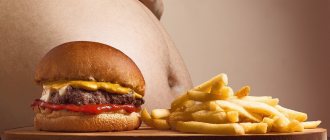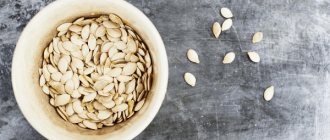People worry about how others see them and consider appearance more important. But isn't health more valuable than appearance? Let's figure out why a person feels bad and uncomfortable, what role visceral fat plays in this, and what it is.
So what is visceral fat? Visceral fat is fat (or internal fat accumulation), which is located around internal organs - the heart, liver, and respiratory system. Unlike subcutaneous, it poses a danger to the human body and is the cause of some chronic diseases.
But it's not all that scary. Visceral fat accumulations also perform positive functions - helping in the proper functioning of organs, serving as shock absorbers, a source of energy, and protection from external damage. But these are natural deposits.
As they say, everything is good in moderation. Small increases in accumulation begin to pose some danger to humans: it disrupts the blood flow of the lymph, oxygen imbalance occurs, shortness of breath, etc.
Determination of visceral fat level
Of course, the exact percentage of internal deposits is determined in a specialized place, for example in a clinic. But to know whether it’s worth going there, you need to take measurements at home. To do this, you need to know two indicators: waist and hip circumference. And divide one by the other.
For example, the waist circumference is 63 cm, and the hip circumference is 100 cm. Then, based on the results of division, we get the value 0.63.
Watch the video “10 Facts” for a more complete picture.
Featured
Norm and index of visceral fat in men and women
It is important to detect excess visceral fat in yourself in time, since your health directly depends on it. According to scientific data, its minimum amount that should be in the body is 8-12%. Such values are observed among bodybuilding athletes.
The forms do not affect the content of internal fat. In an outwardly thin girl, its level can be several times higher, which is the paradox. According to medical indications, for a woman under 30 years of age the rate should not exceed 24%, and for women over this age - 27%. For men, the norm is 5% higher.
Body mass index will also help determine whether all parameters are in order. To do this, you need to make calculations using the formula: divide your weight (kilograms) by your height (meters) squared. The norm for women is up to 24, for men – 25.
However, you should not blindly trust these values; a person’s constitution can tell a lot. It is also recommended to check the girth of the wrist: if it is 13 cm, then the optimal result will be a value of up to 20, if 15 cm, then up to 23. If the wrist reaches 18 cm, then the norm for BMI is a figure of up to 25.
Note! Such calculations are not intended to determine the amount of internal fat for teenagers and pregnant women.
How to understand that there is excess deep fat
To find out whether the amount of internal fat is within normal limits, you will not need any additional equipment other than a centimeter tape: you just need to measure your waist circumference. For women, the circumference should not be more than 80 cm, for men – 90 cm. Violation of these proportions indicates excess visceral fat.
At the moment, there are special devices that will help more accurately determine its content. One of the tools is a medical caliper. It is used in fitness centers, medical offices, and dispensaries. The device is quite expensive because it is technically complex and is capable of measuring every fold of fat.
Note! There are also cheaper analogues of calipers that can be purchased for home use and measure the increase or loss of visceral fat with fairly high accuracy.
Portable health devices called “fat meters” are also available. They are easy to use - just enter the basic indicators (height, weight, gender and age) and squeeze the special electrodes with your hands to calculate the percentage and kilograms of deposits.
How can you get rid of visceral fat? Effective methods
To get rid of excess internal fat, standard methods used by many people to lose excess weight are suitable:
- Diet – involves a balanced diet and limiting calorie intake.
- Physical activity, sports.
If you decide to take charge of yourself, then you need to start by getting rid of bad habits. These are two surefire ways to fight both subcutaneous and visceral fat.
Exercises
For some people, joining a gym requires a significant financial outlay. There are solutions to this too. And if you are not such a lazy person, then you can do many exercises without leaving your home.
- Classic plank. The most valuable exercise, as it ensures the work of all the muscles of the body.
- Exercises for the lower abdomen.
- Side exercises.
- Exercises for the upper abdomen.
"Beauty injections" for burning fat
Experts in the field recommend using them after using the above methods. That is, after losing weight and gaining muscle mass. It is in this case that “beauty injections” will lead to visible results.
How it works? The drug is injected into the stomach using an injection. The medicine activates the process of lipolysis, i.e. the process of breaking down fats and removing them from the affected area.
The effectiveness of such injections is quite subjective. After all, they promote the removal of cholesterol, and not the fat cells themselves, which of course is also useful, but still. Therefore, the combined use of injections with proper nutrition and exercise was reported above.
Don't forget about contraindications. Therefore, before deciding to use the described method, you should consult your doctor.
Japanese method to remove belly fat by breathing
Consider a breathing technique invented by a Japanese actor, which is often used in Pilates classes:
- First you need to stand up, straighten your back, move your shoulders back and, as it were, reach with the top of your head towards the ceiling - stretch yourself.
- Next, you need to take a step forward with your right foot. Fix the body weight on the left.
- Next comes the breathing technique. It is important to do it correctly.
- You need to breathe for a couple of minutes with your arms raised up. Take a deep breath into your stomach and exhale slowly. Relax, lower your hands.
- Change legs and repeat the exercises.
Course – 3 months.
The self-massage technique is explained in more detail in the following video.
Abdominal massage
Massage can be performed in various ways, but the most effective in this are specialized belts that fit tightly to the body.
Such belts include several modes, including getting rid of cellulite and building muscle. The intensity of work can be changed. The advantages of this type of massage are: crushing deposits, improving blood circulation, increasing muscle tone, normalizing intestinal function and losing weight.
Studies show that daily training with a belt for 15-20 minutes (and no more, otherwise the belt will overheat) for one month helps to get rid of fat in a total volume of 5 kilograms.
If you do not have the opportunity to purchase a simulator, then massage can be performed at home, on your own. The main thing is to combine it with physical activity.
Liposuction
This expensive method is not used often. In addition, he does not solve the very causes of excess deposits, but pumps them out. Therefore, no one guarantees that fat accumulations will not return after the procedure. Therefore, if you have already decided to use this method, then after it you cannot disband yourself.
The described procedure is recommended for people under 40 years of age with medium fat deposits and elastic skin.
There are several types of liposuction. You can find out what is suitable by contacting a plastic surgeon. The cost of liposuction starts from 65 thousand rubles.
Obesity in men. How to help a patient: practical advice
12.01.2020
2787
0
| E.Yu. Gritskevich , endocrinologist, andrologist (Moscow) |
During the urological Internet conference No. 6, endocrinologist, andrologist and weight loss specialist Elena Yurievna Gritskevich made a report on possible approaches to solving the problem of obesity.
According to the WHO definition, obesity is a chronic disease, heterogeneous in etiology and clinical manifestations, progressive in its natural course, characterized by excessive deposition of fat mass in the body and a relapsing nature
What is more accurate: BMI or waist circumference?
A tool for assessing the presence and severity of obesity is the body mass index (BMI) - the ratio of body weight in kilograms to the square of height in meters (kg/m2). According to WHO, a diagnosis of overweight or obesity is made in adults in the following cases:
- BMI greater than or equal to 25 – overweight;
- BMI greater than or equal to 30 – obesity;
- Waist circumference more than 94 cm.
However, it should be remembered that even with a BMI above normal, a patient can have a large percentage of muscle mass, and therefore not suffer from obesity. In some cases, focusing on waist circumference may be more reasonable.
If previously men lagged behind women in the prevalence of obesity, today its prevalence rates are almost equal between the sexes.
Patient examination algorithm
Individually, according to indications, a number of laboratory examination methods can be used in obese patients:
- performing a glucose tolerance test;
- lipid profile (total cholesterol, triglycerides, HDL, LDL);
- liver function indicators (bilirubin and its fractions, ALT, AST, alkaline phosphatase);
- determination of thyroid function (TSH, sT4);
- overnight dexamethasone test with one mg of dexamethasone if endogenous hypercortisolism is suspected;
- testosterone, prolactin, FSH, LH, estradiol, SHBG;
- C-peptide and insulin for suspected hyperinsulinemia (eg, insulinoma, nesidoblastosis, etc.).
Among the instrumental examination methods that can be used are:
- bioimpedansometry;
- Ultrasound of the abdominal organs and kidneys;
- Ultrasound of the thyroid gland;
- Ultrasound of the pelvic organs (scrotum);
- ECG;
- ECHO-KG;
- 24-hour blood pressure monitoring, ECG monitoring;
- radiography of the skull, sella turcica;
- polysomnography;
- MRI of the pituitary gland with contrast enhancement;
- MRI of the brain.
Which diet is better?
The basic principles of weight loss are a balanced diet, physical activity, normalization of carbohydrate, lipid and other types of metabolism if they are disturbed, if necessary, drug therapy, and in case of morbid obesity, bariatric surgery.
The most appropriate diet therapy for weight loss should be safe, effective and something that the patient can adhere to. Meals should include all major food groups. It is recommended to monitor the food eaten in the form of a food diary, which also records daily physical activity. Individual food preferences, eating behaviors and eating patterns must be taken into account, as well as cultural background, food traditions and availability, timing and financial concerns, food knowledge and culinary skills.
Low-calorie, fat-restricted diets lead to greater reductions in total and LDL cholesterol, while carbohydrate-restricted diets lead to greater reductions in serum triglycerides and increases in HDL cholesterol, as well as greater reductions in serum glucose HbA1c.
Separately, Elena Yuryevna mentioned the “Mediterranean” diet, which is not a specific diet, but rather a generalized term for several food options that are often found in Greece, Italy and Spain. The Mediterranean diet has the most consistent and robust scientific support for reducing the risk of atherosclerotic cardiovascular disease. There are a number of basic principles of such a diet:
- olive oil as the main source of fat;
- consumption of vegetables, legumes, whole grains, nuts and seeds;
- moderate consumption of red wine;
- moderate consumption of seafood, dairy products (cheese and yogurt), poultry and eggs;
- limiting the consumption of red meat, meat products and sweets.
You can also consider the DASH (Dietary Approach to Stop Hypertension) diet, developed by the US National Heart, Lung, and Blood Institute, mainly to correct high blood pressure. It prefers vegetables, fruits and whole grains, low-fat or low-fat dairy products , fish, poultry, lean meats, nuts, seeds and legumes, as well as fiber and minerals, particularly calcium, potassium and magnesium. Limit intake of sodium (1500–2300 mg per day), fat (no more than 27% of total daily calories), saturated fat (<6% of total daily calories), red and processed meats. Avoid sweet drinks and foods with added sugar.
The Paleolithic diet is based on the diet believed to have existed during the Paleolithic period (lasting 3.4 million years and ending 6000–2000 BC). It recommends fresh vegetables, fruits and root vegetables, grassy lean red meats, fish and seafood, eggs, nuts and seeds, and healthy oils (olive, walnut, flaxseed, macadamia, avocado and coconut). Avoid grains, legumes including peanuts, dairy products, potatoes, processed foods, refined sugar, refined oils and salt.
Optimal physical activity – how many times a week?
Physical activity is another extremely important measure in the fight against obesity. It refers to any work performed by skeletal muscles that results in energy expenditure in excess of the level characteristic of the resting state. The intensity and type of load depend on the patient, in particular, the presence of complications, and are selected individually. Moreover, any physical activity is better than no physical activity.
Dynamic (aerobic) training, performed at least 150 minutes (2.5 hours) per week of moderate activity or 75 minutes (1.25 hours) of vigorous activity, provides most of the health benefits, moderate weight loss and prevention of its increase. In the mode of 300 minutes (5 hours) per week with moderate aerobic activity or 150 minutes (2.5 hours) with intense aerobic activity, more sustainable weight loss is observed and weight regain after weight loss is prevented. If resistive (anaerobic) strength training is selected, a preliminary assessment of body composition (bioimpedance measurement) is carried out. During the training process, appropriate weight lifting techniques are used, various weights, resistance bands, etc. are used. During the recovery period, short-term muscle pain can be expected.
Medical weight correction
When managing patients with obesity, it is critical to avoid stigmatizing them while encouraging, motivating and supporting their choice to partner with their healthcare provider during treatment. From the point of view of behavioral therapy, eating disorders are divided into several types: external (I eat when I see food), emotional (I eat when I experience emotional discomfort) and restrictive (alternating strict diets with refusal of treatment). Cognitive behavioral therapy builds motivation and sets realistic goals, while patient awareness and family involvement are also important.
Several types of drugs can be used in the drug therapy of obesity:
- centrally acting drugs to accelerate saturation (sibutramine);
- drugs that affect the body's ability to absorb certain nutrients from food (orlistat);
- analogues of human glucagon-like peptide - 1 (liraglutide).
Sibutramine is a reuptake inhibitor of serotonin and norepinephrine, and, to a lesser extent, dopamine at central nervous system synapses. It accelerates the feeling of fullness, reducing the amount of food consumed, and increases the body's energy expenditure, which together leads to a negative energy balance. The drug, however, has a number of side effects: nausea, loss of appetite, constipation, dry mouth, changes in taste, headache, agitation and sweating. Contraindications include uncontrolled arterial hypertension, coronary heart disease, decompensated heart failure, heart rhythm disturbances, cerebrovascular diseases (stroke, transient cerebrovascular accident), severe liver and kidney damage. When taking the drug, blood pressure control is necessary in all patients. The drug is discontinued if the heart rate increases by more than 10 beats per minute, or the blood pressure increases by more than 10 mmHg. Art., and also if it exceeds 140/90 mm Hg. Art. with previously compensated hypertension, if shortness of breath, chest pain or joint swelling progresses. Sibutramine is also not prescribed within 14 days after taking monoamoxidase inhibitors and drugs that act on the central nervous system, including antidepressants.
Liraglutide is a glucagon-like peptide-1 receptor agonist and is an injectable drug. At low doses (1.8 mg per day) it is indicated to lower blood sugar levels in patients with type 2 diabetes. At a dose of 3 mg per day, it is approved for the treatment of obesity. Some patients may lose 5–10% of body weight, especially at higher doses of the drug. Side effects include nausea, hypoglycemia, diarrhea, constipation, vomiting, headache, decreased appetite, dyspepsia, dizziness, abdominal pain and increased lipase. Contraindicated in patients with a family history of medullary thyroid cancer or multiple endocrine neoplasia syndrome type 2. It is recommended to discontinue therapy if pancreatitis, gallbladder disease, or suicidal behavior or thoughts are suspected. May contribute to hypoglycemia, especially in patients with diabetes mellitus receiving insulin or sulfonylureas. It can also slow down gastric emptying, which may affect the absorption of concomitantly administered oral medications.
Orlistat is a gastrointestinal lipase inhibitor that impairs the absorption of fat from food. Low doses are approved without a prescription. Some patients may lose about 5% of their body weight while taking it. Side effects include oily discharge with gas from the rectum, especially after fatty foods, which, however, can help with constipation. In addition, the drug can promote the formation of stones in the gall bladder and kidneys, and also cause malabsorption of fat-soluble vitamins (A, D, E, K). It is necessary to take a daily multivitamin against this background. Contraindications are chronic malabsorption syndrome and cholestasis. Rare cases of severe liver damage and pancreatitis have been reported. Interacts with cyclosporine, hormonal contraceptives, anticonvulsants, thyroid hormones and warfarin.
Heavy artillery
Surgical treatment is recommended for morbid obesity and ineffectiveness of previously carried out conservative measures in patients 18–60 years old.
It is carried out for BMI > 40 kg/m2 - regardless of the presence of concomitant diseases, as well as for BMI > 35 kg/m2 and the presence of severe diseases, the course of which can be influenced by reducing body weight.
A number of techniques can be used in bariatric surgery. In particular, Roux-en-Y gastric bypass provides significant improvements in metabolic disorders, but is associated with an increased risk of malabsorption complications. Promotes weight loss up to 65–75%. Has benefits for high BMI, GERD, type 2 diabetes.
Laparoscopic adjustable banding is the least invasive method and has a 25% to 40% risk of bandage cuff migration at 5 years. Provides weight reduction of 30–50%. Used for obesity without severe metabolic disorders.
Longitudinal (sleeve) gastrectomy improves metabolic diseases without disturbing the small intestinal anatomy. Micronutrient deficiencies may occur infrequently. After it, a weight loss of 50–70% is observed.
Biliopancreatic bypass provides maximum weight loss and elimination of metabolic diseases. Associated with an increased risk of deficiency of vitamins and microelements. This is the most technically complex method, providing weight reduction of up to 70–80%.
In addition, Elena Yuryevna mentioned the American BAROnova system with a silicone device TransPyloricShuttle. The intragastric system is small in size - 80–90% smaller than a balloon. It changes the passage of gastric contents by slowing gastric emptying. The effectiveness of the system was confirmed by the results of the randomized, double-blind, placebo-controlled study ENDObesity II, which involved 302 patients from nine US research centers. Approximately 67% of patients lost 5 percent or more of their body weight, and 40% lost 10% or more of their weight, compared with 14% of patients in the placebo group. Sharp fluctuations in blood pressure and other cardio-metabolic risk factors, as well as a decrease in quality of life were not observed with this treatment. Side effects included gastrointestinal events such as abdominal pain, nausea, vomiting and dyspepsia, as expected with an intragastric device designed to treat obesity through delayed gastric emptying.
Another relatively new technique is embolization of the left gastric artery. The results of the first such operations for weight loss in humans were presented in 2013. Previously, this technique was used to stop gastric bleeding. The researchers found that embolization of the left gastric artery led to a decrease in the production of the hormone ghrelin, which is involved in the regulation of hunger and satiety, which explains the decrease in body weight. The average weight loss in patients was 8–9% in the first 2–6 months after surgery and 16% in 2 years. After losing weight, the operated patients maintained it for at least a year, without any complications. The operation is performed using a microcatheter; spheres of Tris-acrylic molecules bound to gelatin molecules are used as embolization material.
In general, the choice between taking measures to change the patient’s lifestyle, as Elena Yuryevna emphasized, depends on many factors, the main ones of which are the patient’s gender, BMI, waist circumference and the presence of comorbid pathologies.
The material was prepared by V.A. Shaderkina Video of the performance can be viewed on Uro.T
The article was published in the journal “Urology Digest” No. 6-2019
Comments
To post comments you must log in or register
Foods to include in your diet
The products listed in the following table are rich in valuable microelements, vitamins, and fiber, which is why they will become excellent allies in the fight against excess fat.
| Products | Action |
| Dairy | Activation of metabolism. Burning fat deposits. |
| Vegetables | Cleansing the body of harmful substances:
|
| Fruits | Gives a feeling of satiety. Improves digestion. |
| Buckwheat and rice | Satiety. Energy. |
| More seasonings | Burning of fat cells. Improving the functioning of the gastrointestinal tract. |
| Red wine | A small amount is beneficial (50 ml per day) - slowing down the formation of new fat accumulations, breaking down old ones. |
| Water | Removes toxins. Burns calories. |
| Green tea | Improves metabolism. Removal of internal fat. |
| Fish (mackerel, herring) | Contains Omega-3 fatty acids. Burns fat. Improves general condition. |
Recommended Diet
Following these rules can bring excellent results:
- Avoid fatty foods, sweets, fast foods, smoked foods, and sweet soda.
- It is recommended to eat every three hours. But not pies or buns, but fermented milk products and fruits.
- It is forbidden to eat three hours before bedtime.
Example of three meals a day:
Breakfast: oatmeal, yogurt, sandwich on grain bread, green tea. Lunch: salad, soup, meat, green tea, fruit. Dinner: salad, fish, fruit, light dessert.
As they say, “breakfast like a prince, dinner like a pauper” is the main tenet for proper nutrition and, as a result, health.
What does visceral obesity mean?
Visceral obesity is called obesity, in which fat is deposited around the internal organs in the abdominal cavity and chest, the kidneys, liver, heart, and pancreas are affected. This variant of preferential accumulation of adipose tissue is considered an independent risk factor for severe diseases of the cardiovascular system, type 2 diabetes, tumor processes, hormonal and metabolic disorders.
Visceral and abdominal fat - what is it?
Visceral fat is a layer of adipose tissue around the internal organs, that is, located inside the torso, and abdominal fat is localized exclusively in the abdomen. These two terms in medicine are combined into one - abdominal-visceral type. This is due to the fact that they are detected simultaneously in 99% of patients. This type of obesity is also called:
- masculine,
- android,
- central,
- like an apple.
Expert opinion
Alena Ariko
Expert in endocrinology
It is important to note that there is a variant of excess fat deposits around internal organs in patients with normal body weight. It occurs against the background of diabetes mellitus, decreased muscle mass and low physical activity. Therefore, to make a diagnosis of visceral obesity, weighing and calculating the ratio of body weight and height, as with the usual type of the disease, is not enough. Measuring your abdominal circumference does not always help.
A reliable method for identifying internal fat deposits is ultrasound and tomography (MRI or CT). All patients with this type of obesity are required to undergo a blood test: for sugar, glucose tolerance test, insulin level, calculation of the insulin resistance index, cholesterol, triglycerides and lipoprotein ratio.
We recommend reading the article about the types of obesity in men. From it you will learn about the types of obesity in men according to the location of adipose tissue and their causes, why fat deposition is dangerous, as well as about the diagnosis of the condition and treatment of obesity of female and other types in men.
And here is more information about obesity in diabetes mellitus.
Locations in the abdominal cavity
Inside the abdominal cavity there are two types of adipose tissue - regular, located in the omentum, intestinal mesentery, behind the peritoneum. The second type is visceral fat, it surrounds the liver, kidneys, and pancreas. This tissue is very different in that it has the properties of a hormonal organ. The density of fat cells (adipocytes) in it is higher, there are more blood vessels and nerve fibers. It responds to stress hormones, but is resistant to the action of insulin and the satiety hormone leptin.
What does fatty brain mean?
There is no deposition of fat in the brain, so there is no such thing as fatty brain. However, a connection has been established between accumulations of adipose tissue in the abdomen and around the abdominal organs with the functioning of neurons.
In patients with visceral obesity, the volume of gray matter, which is responsible for all basic brain functions: memory, speech, emotions, hearing, vision, decreases. Today, this pattern is being studied; among the identified changes, one can distinguish: disordered eating behavior, breakdowns with overeating, as well as low motivation for motor and sometimes intellectual activity.
Obesity of the brain
Classification
According to the main development factors, visceral obesity is divided into:
- nutritional – associated mainly with overeating and low physical activity;
- constitutional – occurs against the background of a hereditary predisposition;
- hormonal – develops with increased adrenal function, decreased activity of the thyroid gland, testes, ovaries;
- cerebral – appears in diseases of the hypothalamus;
- medicinal – it is provoked by hormones of the corticosteroid group, some antipsychotics, antidepressants.
Expert opinion
Alena Ariko
Expert in endocrinology
The internal type of obesity is not divided into severity levels by body mass index, as usual, since weight does not always determine its presence. For example: if, when fat is deposited in the area of the liver, kidneys, heart, the subcutaneous layer is not enlarged and the muscles are not developed, then the weight will be close to normal.
Obesity, depending on the speed of development, is:
- stable – weight does not change throughout the year;
- progressive – there is an increase of 1 kg per year;
- residual (residual) - during treatment there is a decrease, but still the indicators exceed the norm.
Calculation formula
To calculate the probability of visceral obesity, you need to determine the coefficient using the formula: waist circumference/hip circumference.
The following indicators are taken into account:
- in women, the waist is more than 84 cm, and the coefficient exceeds 0.85;
- for men – waist from 94 cm, ratio to hips more than 0.95.
Based on the data obtained, the risk of heart disease and type 2 diabetes is also assessed (see table).
| Waist circumference | For women | For men |
| From 80 cm | Promoted | Slightly increased |
| From 85 cm | High | Moderately elevated |
| From 88 cm | Very tall | Moderately elevated |
| From 94 cm | Very tall | Promoted |
| From 102 cm | Very tall | High |
This calculation method is quite indicative. For an in-depth examination and obtaining blood test results for cholesterol, triglycerides (TG) and high-density lipoproteins (HDL), an extended formula is used. It also contains body mass index (BMI) - weight in kg/height square in meters, waist circumference (WC).
Calculation algorithm for a man:
- WC/39.68 + (1.88 × BMI).
- TG/1.03.
- 1.31/HDL.
- Multiply the value of 1 by 2 and 3.
For women:
- WC/36.58 + (1.89 × BMI).
- TG/0.81.
- 1.52/HDL.
- Multiply the values of 1 by 2 and 3.
The interpretation of the results depends on age. The risk of vascular diseases, diabetes and tumors is high if the following indicators are obtained within the age interval:
- up to 29 years old – 2.52;
- 29-41 years old – 2.23;
- 41-51 – 1,92;
- 51-65 – 1,93;
- from 65 – 2.
Other means to combat fat. Myth or reality
Let's look at some of the remedies that are often used in the process of losing weight. Are they really that effective?
Fat burning creams
The essence of the creams in this series is to warm up the body (it’s not for nothing that many of them contain pepper) and remove unnecessary moisture. They promote good blood circulation and the removal of harmful substances.
But, as has been repeated many times, everything is good as a whole. Not a single fat burning cream will help without training and proper nutrition. Such products are suitable for massage.
Iodine
Iodine helps activate metabolic processes. In childhood, mothers and grandmothers applied iodine mesh to the skin in order to get rid of colds. As it turns out, many people draw it on their stomach as a means of burning fat deposits.
Doctors believe that this method is not very effective and sometimes even harmful. Since iodine has contraindications. It is much healthier to consume iodine-containing foods.
Soda
Here things are better than with iodine. Doctors recommend soda baths, as well as body wraps, as they definitely bring benefits in the area under study. As for ingestion, it is recommended to be careful and consult a doctor, otherwise you may run into serious problems.
How to deal with visceral fat at home
It is possible to improve your physical condition even at home. All you need to do is get a fitness mat and sportswear (but for the first time, physical exercises can be done at home). It’s not difficult to start eating right, you just need to learn how to calculate the norm of KBZHU (calories, proteins, fats, carbohydrates).
At first you will have to count each product in the component dishes, but later you can quickly learn to identify everything by eye. You need to remove fast carbohydrates from your diet and try to take the stairs rather than the elevator.











